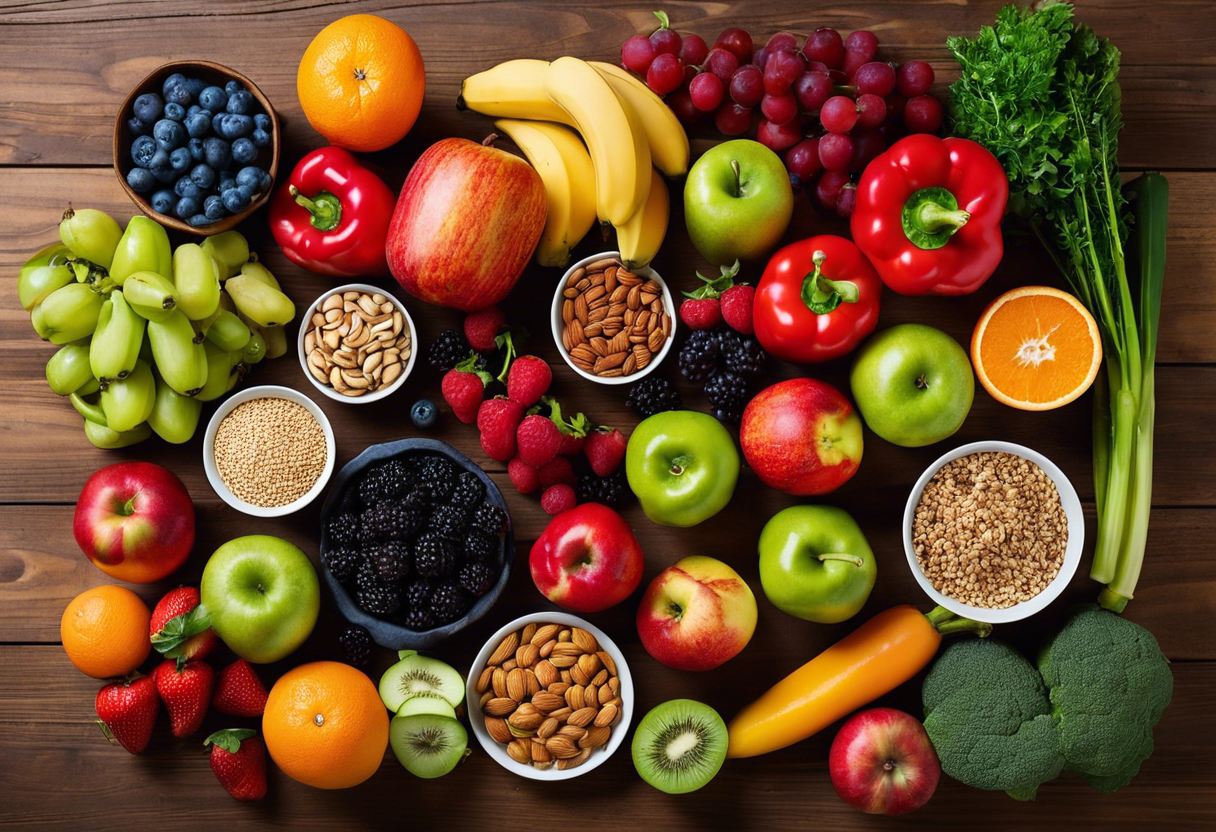Setting Your Goals
I recommend setting specific, measurable, achievable, and time-bound goals to guide your fitness journey.
- Specific: Define your goal with confidence and work hard to achieve it.
- Measurable: Make sure you can track progress.
- Achievable: Set realistic goals to stay motivated.
- Relevant: Goals should align with your overall fitness objectives.
- Time-bound: Give yourself a deadline to work towards.
- Specific: Define your goal with confidence and work hard to achieve it.
- Measurable: Make sure you can track progress.
- Achievable: Set realistic goals to stay motivated.
- Relevant: Goals should align with your overall fitness objectives.
- Time-bound: Give yourself a deadline to work towards.
When setting goals, consider your current fitness level, lifestyle, and any potential obstacles. Stay focused, stay committed, and adjust your goals as needed.
Creating a Sustainable Workout Plan
- Prioritize consistency above intensity.
- Establish attainable goals to keep yourself motivated.
- Change up your routine to keep things from becoming monotonous and boring.
- Observe your body and adjust your plan accordingly.
- Incorporate rest days to encourage recovery and prevent burnout.
Remember that a long-term fitness program is one that you can stick with. Finding a balance that works for you and your lifestyle can help you achieve your fitness goals while maintaining your overall health and well-being.
Technology plays a crucial role in optimizing my fitness routine and supporting me on my path to peak physical fitness.
1. How should I set my fitness goals?
Understanding Nutrition and Diet

Importance of Rest and Recovery
I cannot overemphasize the importance of incorporating rest and recovery into your fitness journey. Rest is not a sign of weakness but a crucial component of progress.
- Muscle Repair: Rest allows muscles to repair and grow stronger after exercise.
- Injury Prevention: Adequate rest reduces the risk of injuries caused by overtraining.
- Energy Restoration: Rest replenishes energy stores, ensuring optimal performance during workouts.
- Mental Health: Rest is essential for mental well-being, reducing stress, and enhancing focus.
- Overall Performance: Proper rest enhances overall physical performance and promotes long-term sustainability in your fitness goals.
Progress must be made during recovery, so prioritize rest as much as your training
routine.
Incorporating Strength Training
I believe that incorporating strength training into your fitness routine is essential for overall physical fitness and health. Here are some key points to consider when adding strength training:
Training for mobility and flexibility is essential to reach peak physical fitness because it improves performance and lowers the chance of injury. These are some important things we should think about:
- Establish Specific Objectives: Decide if your main goals for strength training are to gain more muscle, lose weight, or increase your general strength.
- Commence Slow: To avoid injuries, start with smaller weights and concentrate on good form.
- Increase Weight Gradually: To keep your muscles challenged and prevent plateauing, increase weights gradually.
- Add Variety: To target different muscle areas and avoid monotony, mix in a variety of exercise routines.
- Rest and Recovery: To avoid overtraining, give your muscles time to relax and heal in between strength training sessions.
By following these guidelines, I can ensure that you'll effectively incorporate strength training into your fitness routine and see improvements in your overall physical fitness.
The Role of Cardiovascular Exercise
I believe cardiovascular exercise plays a crucial role in achieving peak physical fitness. Here are key points to consider:
- Improves Heart Health: Regular cardio workouts strengthen the heart, improving its efficiency.
- Burns Calories: Cardiovascular exercise is effective for burning calories and helping in weight loss.
- Increases Endurance: Engaging in cardio activities regularly enhances stamina and endurance levels.
- Mood Boosts: Cardio workouts release endorphins, reducing stress and improving overall mood.
Flexibility and Mobility Training
- Dynamic Stretching: Before any workout, I always start with dynamic stretching exercises to warm up my muscles and increase flexibility. This helps improve my range of motion and prepares my body for the exercises ahead.
- Foam Rolling: Incorporating foam rolling into my routine has been a game-changer. It helps release tension in my muscles, improves circulation, and enhances my overall mobility. I use a foam roller to target specific muscle groups before and after my workouts.
- Yoga or Pilates: Practicing yoga or Pilates regularly has significantly improved my flexibility and core strength. These activities not only help me become more flexible but also enhance my balance and stability, which are essential for overall fitness.
- Mobility Exercises: I make sure to include mobility exercises in my routine to work on specific joints and movements. This helps me maintain a full range of motion, prevent stiffness, and improve my overall agility.
By incorporating flexibility and mobility training into my fitness regimen, I have noticed significant improvements in my performance, recovery, and overall well-being. Make sure to include these aspects in your training plan to unlock your full physical potential.
Mind-Body Connection

- I prioritize the mind-body connection in my fitness journey.
- I believe in the power of mental strength to push me through physical challenges.
- Yoga and meditation techniques help me center myself and maintain focus during workouts.
- Deep breathing exercises enhance my endurance and help me stay present in each movement.
- Visualization techniques assist me in setting and achieving my fitness goals.
- I listen to my body's cues and adjust my workouts to prevent injury and optimize performance.
- Adequate rest and recovery are essential for my overall well-being and physical fitness.
Utilizing Technology for Fitness
I rely on various technological tools to enhance my fitness journey. Here are some ways technology can help me achieve my peak physical condition:
1. Fitness Trackers: Using a fitness tracker helps me monitor my activity levels, sleep patterns, and heart rate, allowing me to make informed decisions about my health.
2. Mobile Apps: I utilize fitness apps to track my workouts, set goals, and access workouts tailored to my needs, ensuring I stay motivated and on track.
3. Virtual Classes: Attending virtual fitness classes enables me to stay connected with instructors and fellow fitness enthusiasts, even from the comfort of my home.
4. Online Resources: I explore online resources like workout videos, nutritional guides, and social media platforms to stay inspired and informed about the latest fitness trends.Technology plays a crucial role in optimizing my fitness routine and supporting me on my path to peak physical fitness.
Overcoming Plateaus and Setbacks
When facing plates in my fitness journey, I embrace change. I vary my routine to shock my body back into progress. Adjusting intensity, trying new exercises, or altering rest periods can all reignite gains.
Setbacks are part of the process. I acknowledge them, learn from their mistakes, and use them as motivation. I remind myself that progress takes time and consistency, and setbacks are opportunities to grow stronger mentally and physically.
Staying focused on my goals, being patient, and trusting the process are key to overcoming plateaus and setbacks on the path to peak physical fitness.
Setbacks are part of the process. I acknowledge them, learn from their mistakes, and use them as motivation. I remind myself that progress takes time and consistency, and setbacks are opportunities to grow stronger mentally and physically.
Staying focused on my goals, being patient, and trusting the process are key to overcoming plateaus and setbacks on the path to peak physical fitness.
FAQS
Setting specific, measurable, achievable, relevant, and time-bound (SMART) goals is crucial for guiding your fitness journey. Consider your current fitness level, lifestyle, and potential obstacles when setting goals. Stay focused, and committed, and be willing to adjust goals as needed.
2. What should I consider when creating a sustainable workout plan?
Prioritize consistency over intensity, establish attainable goals, change up your routine regularly, listen to your body, and incorporate rest days for recovery and prevention of burnout. A sustainable workout plan is one you can stick with long-term while maintaining overall health and well-being.
3. How important is nutrition and diet in achieving peak physical fitness?
Nutrition and diet play a significant role in peak physical fitness. It's essential to consume a balanced diet rich in essential nutrients like fats, proteins, carbohydrates, vitamins, and minerals. Pay attention to portion sizes, and hydration, and avoid processed foods, sugar, and unhealthy fats to support optimal performance and recovery.
4. Why is rest and recovery essential in a fitness regimen?
Rest and recovery are vital components of fitness progress. They allow muscles to repair and grow stronger, reduce the risk of injuries caused by overtraining, replenish energy stores, support mental well-being, and enhance overall physical performance. Prioritize rest as much as your training routine for optimal results.
5. How can I effectively incorporate strength training into my fitness routine?
Incorporate strength training by establishing specific objectives, starting with lighter weights and focusing on form, gradually increasing weight to challenge muscles, adding variety to exercises, and ensuring adequate rest and recovery between sessions.
6. What role does cardiovascular exercise play in achieving peak physical fitness?
Cardiovascular exercise improves heart health, burns calories, increases endurance, and boosts mood by releasing endorphins. It is essential for overall physical health and should be incorporated into a balanced fitness routine.
7. How can flexibility and mobility training enhance my fitness journey?
Flexibility and mobility training improve performance, lower the risk of injury, and support overall physical fitness. Incorporate dynamic stretching, foam rolling, yoga, Pilates, and mobility exercises to increase flexibility, range of motion, balance, and stability.
8. Why is the mind-body connection important in fitness?
Prioritizing the mind-body connection helps maintain focus, mental strength, and motivation during workouts. Practices like yoga, meditation, deep breathing, visualization, and listening to your body's cues enhance performance, prevent injury, and promote overall well-being.
9. How can technology support my fitness journey?
Technology can support your fitness journey through fitness trackers, mobile apps for tracking workouts and setting goals, virtual classes, online resources for inspiration and information, and personalized recommendations. Utilize technology to optimize your fitness routine and stay motivated.
10. How do I overcome plateaus and setbacks in my fitness journey?
Overcoming plates and setbacks involves embracing change, varying your routine, adjusting intensity, trying new exercises, learning from mistakes, staying patient, trusting the process, and staying focused on your goals. Use setbacks as opportunities for growth and motivation to keep moving forward on your path to peak physical fitness.


Comments
Post a Comment